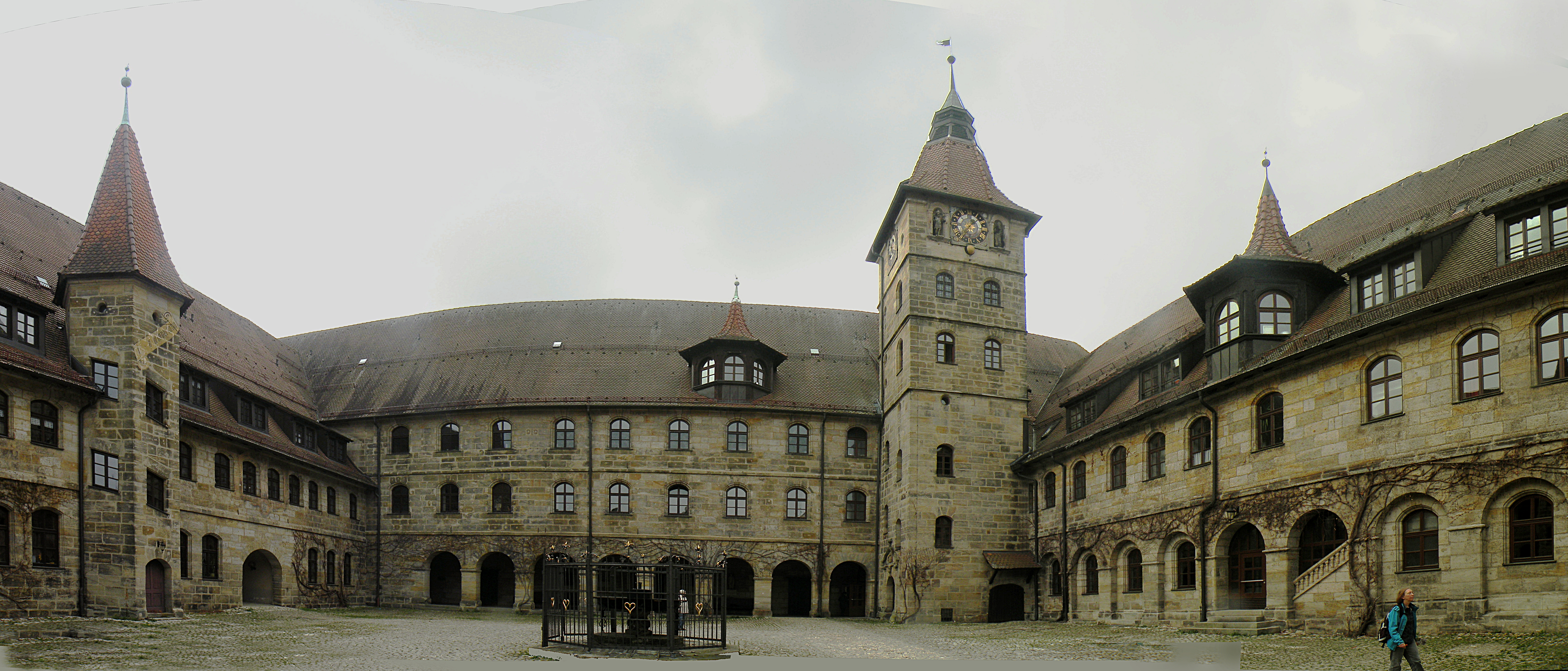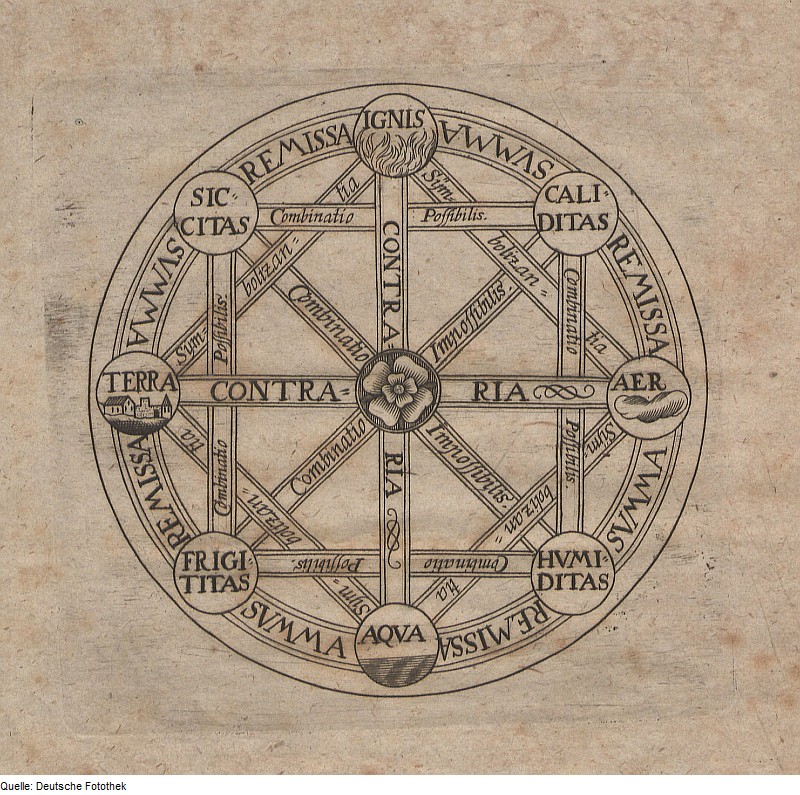|
University Of Altdorf
The University of Altdorf () was a university in Altdorf bei Nürnberg, a small town outside the Free Imperial City of Nuremberg. It was founded in 1578 and received university privileges in 1622 and was closed in 1809 by Maximilian I Joseph of Bavaria. History In the period 1614–1617 Altdorf was briefly the centre of Socinianism in Germany. Encouraged by the connections of German Antitrinitarians to the Racovian Academy in Poland, German and Polish Socinians attempted to establish in Altdorf a similar Academy. Among the notable Socinian students was the 26-year-old Samuel Przypkowski. He was admitted as student on March 22, 1614, three weeks after Thomas Seget, but was expelled from Altdorf in 1616''The Polish Review'', Volume 11, 1966, p. 33. "Crypto-Socinianism" was widely suspected among the student body. In January 1617 the syndicus Jacob Weigel brought two students Joachim Peuschel and Johann Vogel back to Altdorf and the college made them give a public recantation. This re ... [...More Info...] [...Related Items...] OR: [Wikipedia] [Google] [Baidu] |
Generalfeldwachtmeister
''Generalfeldwachtmeister'' is a historical military rank of general officer level in the armies of the German and Scandinavian countries, corresponding to the rank of ''maréchal de camp'' in France. A Generalfeldwachtmeister ranked above a brigadier, but below a lieutenant general (''Generalleutnant'') (in Austria, ''Feldmarschalleutnant''). The title may be literally translated as "master general of field guards", reflecting the original task of the office holder: the inspection of the pickets and the supervision of the dispositions of brigades and regiments in the field and on the march. The title was superseded in the 18th century by ''Generalmajor'' (i.e. major general Major general (abbreviated MG, maj. gen. and similar) is a military rank used in many countries. It is derived from the older rank of sergeant major general. The disappearance of the "sergeant" in the title explains the apparent confusion of a ...). ''Feldwachtmeister'' At regimental level the corr ... [...More Info...] [...Related Items...] OR: [Wikipedia] [Google] [Baidu] |
List Of Early Modern Universities In Europe
The list of early modern universities in Europe comprises all universities that existed in the early modern age (1501–1800) in Europe. It also includes short-lived foundations and educational institutions whose university status is a matter of debate. The operation of the degree-awarding university with its corporate organization and relative autonomy, which had emerged in the Christian medieval world, was continued into the new era. The number of universities which had been in existence at one time during the period rose from around eighty medieval universities to nearly two hundred.Frijhoff 1996, pp. 80–89 While the ''universitas'' arrived in Eastern Europe as far as Moscow, many were established further west either by the new Protestant powers or the Catholic Counter-Reformation spearheaded by the Jesuits. At the same time, the Spanish founded colonial universities and the British colonial colleges in the New World The term ''New World'' is often used to mean ... [...More Info...] [...Related Items...] OR: [Wikipedia] [Google] [Baidu] |
Altdorf Uni
Altdorf, a compound word in German consisting of ''old'' and ''village'', may refer to: France *Altdorf, Bas-Rhin Germany *Altdorf bei Nürnberg, a city in Bavaria *Altdorf, Lower Bavaria, a municipality in Landshut, Bavaria * Altdorf, Böblingen *Altdorf, Esslingen *Altdorf, Rhineland-Palatinate, a municipality in Südliche Weinstraße *Weingarten (Württemberg), formerly ''Altdorf'' Switzerland *Altdorf, Jura or Bassecourt *Altdorf, Schaffhausen *Altdorf, Uri Poland (German name) *Stara Wieś, Pszczyna * Stara Wieś, Silesian Voivodeship United States *Altdorf, Wisconsin Other uses * Altdorf (''Warhammer''), the capital of the Empire in the universe of ''Warhammer Fantasy'' *University of Altdorf The University of Altdorf () was a university in Altdorf bei Nürnberg, a small town outside the Free Imperial City of Nuremberg. It was founded in 1578 and received university privileges in 1622 and was closed in 1809 by Maximilian I Joseph of Ba ..., a former university in Altdo ... [...More Info...] [...Related Items...] OR: [Wikipedia] [Google] [Baidu] |
University Of Leipzig
Leipzig University (german: Universität Leipzig), in Leipzig in Saxony, Germany, is one of the world's oldest universities and the second-oldest university (by consecutive years of existence) in Germany. The university was founded on 2 December 1409 by Frederick I, Elector of Saxony and his brother William II, Margrave of Meissen, and originally comprised the four scholastic faculties. Since its inception, the university has engaged in teaching and research for over 600 years without interruption. Famous alumni include Gottfried Wilhelm von Leibniz, Johann Wolfgang von Goethe, Leopold von Ranke, Friedrich Nietzsche, Robert Schumann, Richard Wagner, Tycho Brahe, Georgius Agricola, Angela Merkel and ten Nobel laureates associated with the university. History Founding and development until 1900 The university was modelled on the University of Prague, from which the German-speaking faculty members withdrew to Leipzig after the Jan Hus crisis and the Decree of Ku ... [...More Info...] [...Related Items...] OR: [Wikipedia] [Google] [Baidu] |
De Arte Combinatoria
The ''Dissertatio de arte combinatoria'' ("Dissertation on the Art of Combinations" or "On the Combinatorial Art") is an early work by Gottfried Leibniz published in 1666 in Leipzig. It is an extended version of his first doctoral dissertation, written before the author had seriously undertaken the study of mathematics.Gottfried Wilhelm Leibniz. ''Hauptschriften zur Grundlegung der Philosophie. Zur allgemeinen Charakteristik.'' ''Philosophische Werke'' Band 1. p. 32. Translated in German by Artur Buchenau. Published, reviewed and added an introduction and notes by Ernst Cassirer. Hamburg: Felix Meiner, 1966, p. 32. The booklet was reissued without Leibniz' consent in 1690, which prompted him to publish a brief explanatory notice in the ''Acta Eruditorum''. During the following years he repeatedly expressed regrets about its being circulated as he considered it immature.Leibniz complained to various correspondents, e.g., to Morell (1 October 1697) or to Meier (23 January 1699); see ' ... [...More Info...] [...Related Items...] OR: [Wikipedia] [Google] [Baidu] |
Habilitation
Habilitation is the highest university degree, or the procedure by which it is achieved, in many European countries. The candidate fulfills a university's set criteria of excellence in research, teaching and further education, usually including a dissertation. The degree, abbreviated "Dr. habil." (Doctor habilitatus) or "PD" (for "Privatdozent"), is a qualification for professorship in those countries. The conferral is usually accompanied by a lecture to a colloquium as well as a public inaugural lecture. History and etymology The term ''habilitation'' is derived from the Medieval Latin , meaning "to make suitable, to fit", from Classical Latin "fit, proper, skillful". The degree developed in Germany in the seventeenth century (). Initially, habilitation was synonymous with "doctoral qualification". The term became synonymous with "post-doctoral qualification" in Germany in the 19th century "when holding a doctorate seemed no longer sufficient to guarantee a proficient transfe ... [...More Info...] [...Related Items...] OR: [Wikipedia] [Google] [Baidu] |
Calculus
Calculus, originally called infinitesimal calculus or "the calculus of infinitesimals", is the mathematics, mathematical study of continuous change, in the same way that geometry is the study of shape, and algebra is the study of generalizations of arithmetic operations. It has two major branches, differential calculus and integral calculus; the former concerns instantaneous Rate of change (mathematics), rates of change, and the slopes of curves, while the latter concerns accumulation of quantities, and areas under or between curves. These two branches are related to each other by the fundamental theorem of calculus, and they make use of the fundamental notions of convergence (mathematics), convergence of infinite sequences and Series (mathematics), infinite series to a well-defined limit (mathematics), limit. Infinitesimal calculus was developed independently in the late 17th century by Isaac Newton and Gottfried Wilhelm Leibniz. Later work, including (ε, δ)-definition of ... [...More Info...] [...Related Items...] OR: [Wikipedia] [Google] [Baidu] |
Gottfried Wilhelm Leibniz
Gottfried Wilhelm (von) Leibniz . ( – 14 November 1716) was a German polymath active as a mathematician, philosopher, scientist and diplomat. He is one of the most prominent figures in both the history of philosophy and the history of mathematics. He wrote works on philosophy, theology, ethics, politics, law, history and philology. Leibniz also made major contributions to physics and technology, and anticipated notions that surfaced much later in probability theory, biology, medicine, geology, psychology, linguistics and computer science. In addition, he contributed to the field of library science: while serving as overseer of the Wolfenbüttel library in Germany, he devised a cataloging system that would have served as a guide for many of Europe's largest libraries. Leibniz's contributions to this vast array of subjects were scattered in various learned journals, in tens of thousands of letters and in unpublished manuscripts. He wrote in several languages, primaril ... [...More Info...] [...Related Items...] OR: [Wikipedia] [Google] [Baidu] |
Polymath
A polymath ( el, πολυμαθής, , "having learned much"; la, homo universalis, "universal human") is an individual whose knowledge spans a substantial number of subjects, known to draw on complex bodies of knowledge to solve specific problems. In Western Europe, the first work to use the term polymathy in its title () was published in 1603 by Johann von Wowern, a Hamburg philosopher. Von Wowern defined polymathy as "knowledge of various matters, drawn from all kinds of studies ... ranging freely through all the fields of the disciplines, as far as the human mind, with unwearied industry, is able to pursue them". Von Wowern lists erudition, literature, philology, philomathy, and polyhistory as synonyms. The earliest recorded use of the term in the English language is from 1624, in the second edition of '' The Anatomy of Melancholy'' by Robert Burton; the form ''polymathist'' is slightly older, first appearing in the ''Diatribae upon the first part of the late Hist ... [...More Info...] [...Related Items...] OR: [Wikipedia] [Google] [Baidu] |
David Caspari
David Caspari (5 March 1648 – 28 February 1702) was a German Lutheran theologian. He was the father of Georg Caspari. Born in Königsberg, Duchy of Prussia, Caspari studied at the Albertina and the universities of Jena, Wittenberg, Leipzig, Altdorf, Strassburg, and Helmstedt. He became sub-inspector at the Albertina in 1676. Two years later he was appointed rector of Riga Cathedral's school. Caspari died in Riga as the school's superintendent. Works *''De Vita Dei, Qualis ea sit ex Mente Graecorum et Potissimum Aristotelis'' (Jena, 1673) *''De Quaestione an Virtus Cadat in Deum'' (Königsberg, 1677) *''De Futuri Theologi Studiis Philologicis et Philosophicis'' (edited by Georg Caspari, 1705) *''Breviarium Theologiae Moralis'' (edited by Georg Caspari, 1712) References *John McClintock. ''Cyclopaedia of Biblical, Theological, and Ecclesiastical Literature''. Harper and Brothers. New York. 188*Johann Friedrich von Recke, Karl Eduard von Napiersky Karl Eduard von Na ... [...More Info...] [...Related Items...] OR: [Wikipedia] [Google] [Baidu] |
Johann Pachelbel
Johann Pachelbel (baptised – buried 9 March 1706; also Bachelbel) was a German composer, organist, and teacher who brought the south German organ schools to their peak. He composed a large body of sacred and secular music, and his contributions to the development of the chorale prelude and fugue have earned him a place among the most important composers of the middle Baroque era. Pachelbel's music enjoyed enormous popularity during his lifetime; he had many pupils and his music became a model for the composers of south and central Germany. Today, Pachelbel is best known for the Canon in D; other well known works include the Chaconne in F minor, the Toccata in E minor for organ, and the '' Hexachordum Apollinis'', a set of keyboard variations. He was influenced by southern German composers, such as Johann Jakob Froberger and Johann Caspar Kerll, Italians such as Girolamo Frescobaldi and Alessandro Poglietti, French composers, and the composers of the Nuremberg tra ... [...More Info...] [...Related Items...] OR: [Wikipedia] [Google] [Baidu] |

.jpg)




